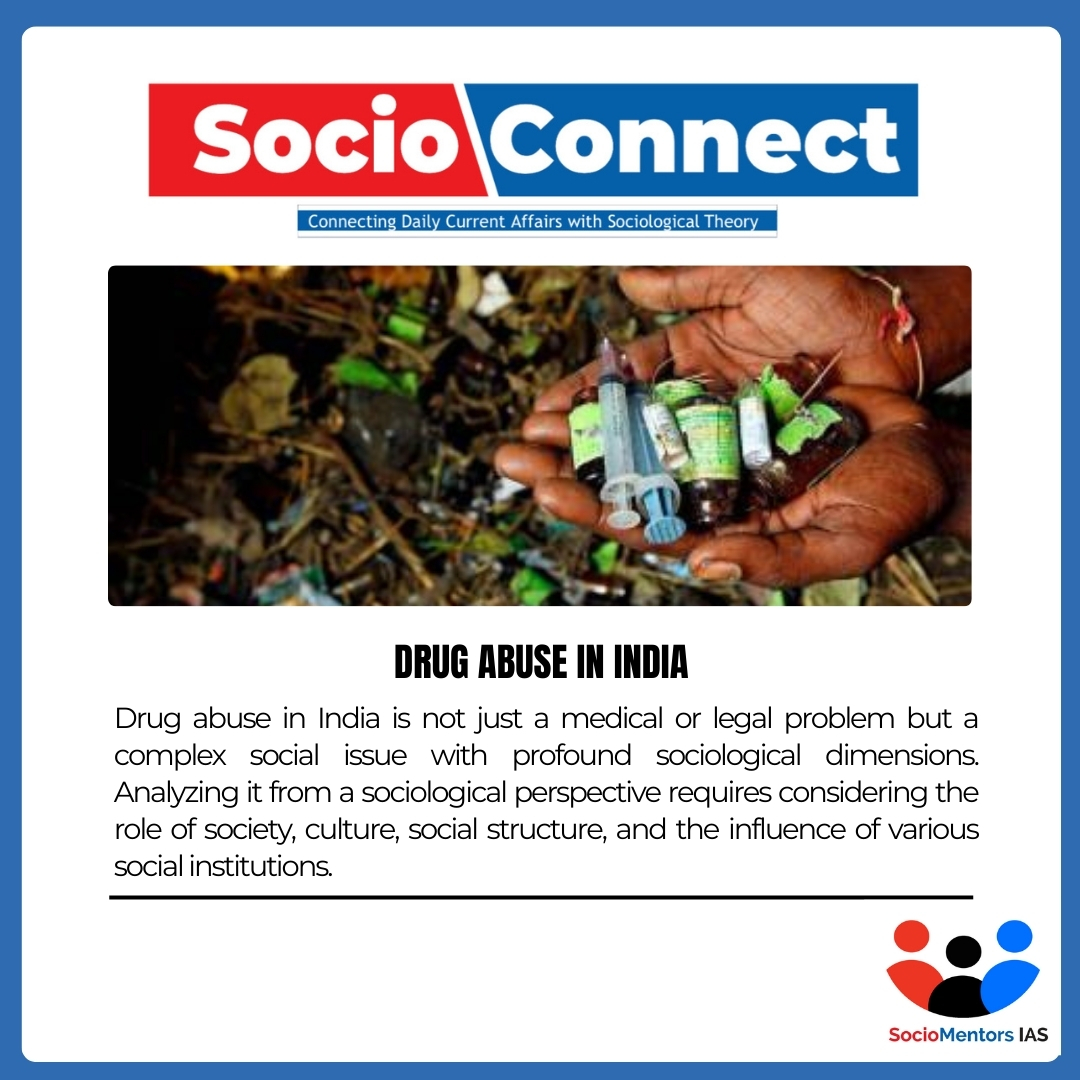Drug Abuse in India
September 25, 2024
Drug abuse in India has seen a significant increase in recent years, with profound social, economic, and health-related impacts. As per the report of Magnitude of Substance Use in India released by All India Institute of Medical Science (AIIMS) in 2019, more than half of the drug abuse cases are reported from states like Punjab, Assam, Delhi, Haryana, Manipur, Mizoram, Sikkim and Uttar Pradesh. According to the 2019 National Drug Use Survey by the Ministry of Social Justice and Empowerment, around 2.1% of the Indian population (over 22 million people) used opioids, with Punjab reporting among the highest levels of drug abuse in the country.
Reasons for drug abuse in the country:
- Unemployment and Underemployment: Limited job opportunities and economic instability can lead to frustration and hopelessness. Individuals facing financial struggles may resort to drug use as an escape from their daily challenges.
- Media and Pop Culture: The influence of Western culture and media, which sometimes glamorizes drug use in films, music, and pop culture, has also contributed to changing attitudes towards drugs. As India becomes more globalized, the appeal of a “modern” lifestyle often includes recreational drug use. Exposure to these portrayals can create an environment where drug use is perceived as desirable or glamorous.
- Easy Accessibility: Availability of drugs due to weak law enforcement, inadequate border control, and lack of rehabilitation centers can contribute to the prevalence of drug abuse. The presence of drug trade and organized criminal networks can introduce drugs into communities, making them readily available to vulnerable individuals.
- Marginalization and Disempowerment: Much drug use in poor urban areas results from the poverty, racial inequality, and other conditions affecting people in these locations. They turn to illegal drugs partly to feel better about their situation, and partly because the illegal drug market is a potentially great source of income that does not require even a high school degree. This sense of disempowerment and exclusion can lead individuals to turn to drugs as a coping mechanism.
Sociological Analysis of the issue of Drug Abuse
- According to Elliot Currie, serious drug use is not evenly distributed, it runs ‘along the fault lines of our society.’ It is concentrated among some groups and not others. Communities experiencing social and economic marginalization often lack access to basic resources, education, and employment opportunities. Also,
- Alienation and breakdown of traditional structures: Rapid urbanization and migration can disrupt traditional community structures and support systems. Individuals who feel disconnected from their cultural roots and lack a sense of belonging may seek solace in drug use.
- Socialization: According to Hanson, peer influences greatly influence one’s likelihood of using alcohol, tobacco, and a host of other drugs. Much and probably most drug use begins during adolescence, when peer influences are especially important. Also, in certain communities, drug use might become normalized due to widespread usage. This normalization can erode social barriers against drug abuse and make it more acceptable.



